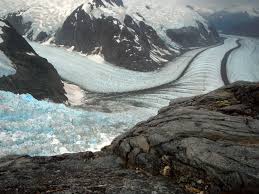Stamp: Georgy Ya. Sedov (1877-1914), Russian Arctic explorer (Soviet Union, USSR 1952)
Georgy Ya. Sedov (1877-1914), Russian Arctic explorer (Soviet Union, USSR 1952)
04 July (Soviet Union, USSR ) within release 75th Birth Anniversary of Georgy Sedov goes into circulation Stamp Georgy Ya. Sedov (1877-1914), Russian Arctic explorer face value 40 Russian kopek
| Stamp Georgy Ya. Sedov (1877-1914), Russian Arctic explorer in catalogues | |
|---|---|
| Michel: | Mi:SU 1634 |
Stamp is vertical format.
Stamp Georgy Ya. Sedov (1877-1914), Russian Arctic explorer it reflects the thematic directions:
Commemorations are a type of religious observance in the many Churches of the Anglican Communion, including the Church of England. They are the least significant type of observance, the others being Principal Feasts, Principal Holy Days, Festivals, and Lesser Festivals. Whereas Principal Feasts must be celebrated, it is not obligatory to observe Commemorations. They are always attached to a calendar date, and are not observed if they fall on a Sunday, in Holy Week, or in Easter Week. In Common Worship Commemorations are not provided with collects or indications of liturgical colour. However, they may be celebrated as Lesser Festivals if local pastoral conditions suggest it.
Exploration is the process of exploring, an activity which has some expectation of discovery. Organised exploration is largely a human activity, but exploratory activity is common to most organisms capable of directed locomotion and the ability to learn, and has been described in, amongst others, social insects foraging behaviour, where feedback from returning individuals affects the activity of other members of the group
The polar bear (Ursus maritimus) is a large bear native to the Arctic and nearby areas. It is closely related to the brown bear, and the two species can interbreed. The polar bear is the largest extant species of bear and land carnivore, with adult males weighing 300–800 kg (660–1,760 lb). The species is sexually dimorphic, as adult females are much smaller. The polar bear is white- or yellowish-furred with black skin and a thick layer of fat. It is more slender than the brown bear, with a narrower skull, longer neck and lower shoulder hump. Its teeth are sharper and more adapted to cutting meat. The paws are large and allow the bear to walk on ice and paddle in the water.
A glacier (US: /ˈɡleɪʃər/; UK: /ˈɡlæsiər, ˈɡleɪsiər/) is a persistent body of dense ice that is constantly moving under its own weight. A glacier forms where the accumulation of snow exceeds its ablation over many years, often centuries. It acquires distinguishing features, such as crevasses and seracs, as it slowly flows and deforms under stresses induced by its weight. As it moves, it abrades rock and debris from its substrate to create landforms such as cirques, moraines, or fjords. Although a glacier may flow into a body of water, it forms only on land and is distinct from the much thinner sea ice and lake ice that form on the surface of bodies of water.



